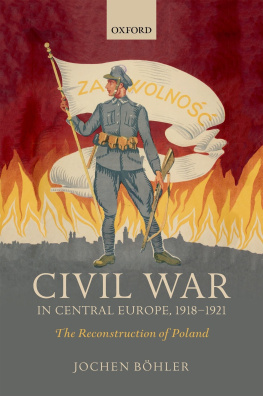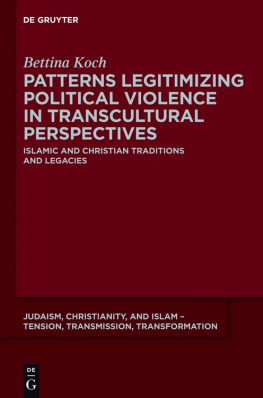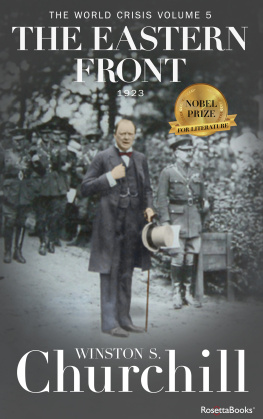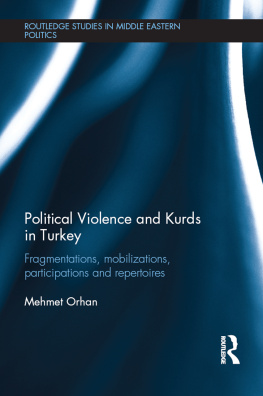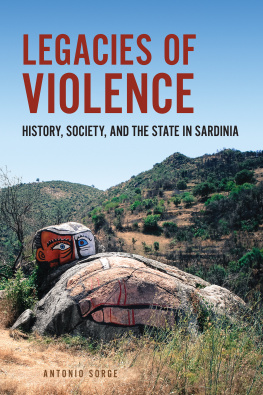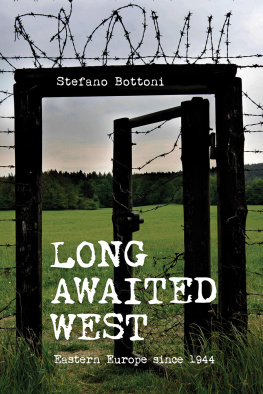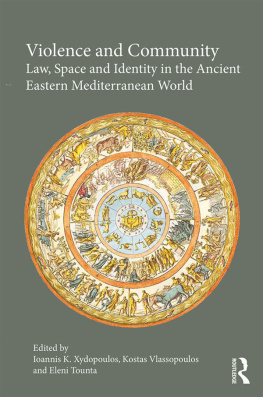Europas Osten im 20. Jahrhundert Schriften des Imre Kertsz Kollegs Jena
Herausgegeben von Wodzimierz Borodziej und Joachim von Puttkamer
Band 3
Eastern Europe in the Twentieth Century Publications of the Imre Kertsz Kolleg Jena
Edited by Wodzimierz Borodziej and Joachim von Puttkamer
Volume 3
Oldenbourg Verlag Mnchen 2014

The Imre Kertsz Kolleg Jena Central and Eastern Europe in the Twentieth Century. Historical Experience in Comparison at the Friedrich Schiller University in Jena is an institute for the advanced study of the history of Eastern Europe in the twentieth century.
The Kolleg was founded in October 2010 as the ninth Kte Hamburger Kolleg of the German Federal Ministry for Education and Research (BMBF). The directors of the Kolleg are Professor Dr. Wodzimierz Borodziej and Professor Dr. Joachim von Puttkamer.
Friedrich-Schiller-Universitt Jena
Bibliografische Information der Deutschen Nationalbibliothek
Die Deutsche Nationalbibliothek verzeichnet diese Publikation in der Deutschen Nationalbibliografie; detaillierte bibliografische Daten sind im Internet ber http://dnb.d-nb.de abrufbar.
Library of Congress Cataloging-in-Publication Data
A CIP catalog record for this book has been applied for at the Library of Congress
Dieses Werk ist urheberrechtlich geschtzt. Die dadurch begrndeten Rechte, insbesondere die der bersetzung, des Nachdrucks, des Vortrags, der Entnahme von Abbildungen und Tabellen, der Funksendung, der Mikroverfilmung oder der Vervielfltigung auf anderen Wegen und der Speicherung in Datenverarbeitungsanlagen, bleiben, auch bei nur auszugs-weiser Verwertung, vorbehalten. Eine Vervielfltigung dieses Werkes oder von Teilen dieses Werkes ist auch im Einzelfall nur in den Grenzen der gesetzlichen Bestimmungen des Urhe-berrechtsgesetzes in der jeweils geltenden Fassung zulssig. Sie ist grundstzlich vergtungs-pflichtig. Zuwiderhandlungen unterliegen den Strafbestimmungen des Urheberrechts.
2014 Oldenbourg Wissenschaftsverlag GmbH
Rosenheimer Strae 143, 81671 Mnchen/Deutschland
www.oldenbourg-verlag.de
Ein Unternehmen von De Gruyter
Lektorat: Dr. Julia Schreiner
Herstellung: Karl Dommer
Einbandgestaltung: hauser lacour
Gedruckt in Deutschland
Dieses Papier ist alterungsbestndig nach DIN/ISO 9706.
ISBN 978-3-486-74195-7
e-IBSN 978-3-486-85756-6
Epub-production: Jouve, www.jouve.com
Acknowlegments
This volume is the result of the workshop on Legacies of Violence. Eastern Europes First World War held at the Imre Kertsz Kolleg in Jena from 13 to 14 April 2012. At this workshop, respected scholars of Eastern European history discussed the state of the art and presented recent research on the topic. Their presentations were then commented on by a renowned specialist in Western European history.
The editors would like to express their deepest gratitude to the management of the Imre Kertsz Kolleg, Daniela Gruber, Diana Joseph, and Raphael Utz, for their splendid organisation of the workshop and their support during the editing process. Thanks are also due to the student assistants Michal Korhel, Thomas Marx, Tim Nerlich, Felix Petzold, Franziska Rohdewald, Alexander Walther, Philipp Weigel and Christian Werkmeister, who ensured that everything ran smoothly.
The editors owe a great debt of gratitude to the authors of this volume for their cooperativeness and patience. Translations for the volume were provided by Allison Brown, Berlin (Dietrich Beyraus contribution), Antoni Grny, Warsaw (Maciej Grnys contribution), and Charlotte Hughes-Kreutzmller, Berlin (Philipp Thers contribution). All the English texts were thoroughly proofread and edited by Brenda Black, Munich (the contributions by Dietrich Beyrau, Joachim von Puttkamer and Piotr J. Wrbel) and Anne Boden, Berlin/ Jena (all the other contributions and overall editing). Christian Werkmeister, Jena, formatted and standardised all the contributions, compiled the manuscript, transcribed all the Russian and Ukrainian terms, and prepared the name index. Julia Schreiner, Munich, was our partner at the Oldenbourg Publishing House. It was a pleasure to work with all of the above and their professionalism and efficiency were very much appreciated.
Unfortunately, a paper on paramilitarism and the rise of fascism in interwar Eastern Europe, which was presented at the workshop, could not be included in this volume. The editors are therefore deeply indebted to Oxford University Press and to Robert Gerwarth for allowing us to reprint his brilliant recent study Fighting the Red Beast: Counter-Revolutionary Violence in the Defeated States of Central Europe, in: idem/John Horne (eds.): War in Peace. Paramilitary Violence in Europe after the Great War, Oxford 2012, 5271 in part III. Radicalization.
Finally, we want to express our gratitude to the Federal Ministry of Education and Research, whose generous funding of the Imre Kertsz Kolleg and its scholarly undertakings made both the workshop and this volume possible.
Introduction
The First World War in Central, Eastern and Southeastern Europe differed in many ways from its counterpart in the West. In terms of its duration, the persecution of ethnic minorities, deportations and the death of millions of civilians, ideological conflicts, paramilitary activities, political turmoil and the reshaping of the post-war landscape, it was arguably more extreme. Violence also played an ever-greater role beyond the battlefields at the beginning and towards the end of the war in the East. While in the West, parameters such as warring parties, war aims and coalitions remained quite distinct, in the East they were blurred or even reversed in the course of events. As
The short-term reasons for this are manifold. Firstly, while in the West clear-cut armies mostly serving states with clear boundaries soon found themselves in a deadlock grip, the demise of four continental Empires turned Central and Eastern Europe into a shatterzone of ethnic, social, national, and political fragmentations, intensified existing tensions, and predetermined future lines of conflict, which would be fought out by armies and bands of all colours and orientations. Secondly, the Eastern frontline was not static: twice, in 1914/15, and again from 1917 onwards, it swept across large parts of Central and Eastern Europe like a giant windshield wiper, leaving the indigenous population at the mercy of retreating or advancing armies and turning millions into refugees. The most extreme case was arguably former tsarist Ukraine, where from late 1917 to the beginning of 1920 some towns [] changed hands as many as twenty times, and no one government controlled for longer than eight consecutive months any sizable core territory. Thirdly, with the Balkan Wars, fighting in the East started two years earlier than in the West, and, after the 1917 October Revolution and the final defeat of the Central Powers had turned the distribution of power upside down, this fighting merged into a bloody civil war and a variety of conflicts, with new states trying to establish themselves on the imperial ruins and no clear frontline to speak of. The fact that the First World War with its preludes and aftermaths lasted more than twice as long (19121921) in Central and Eastern Europe than it did in Western Europe (19141918) is often overlooked.


